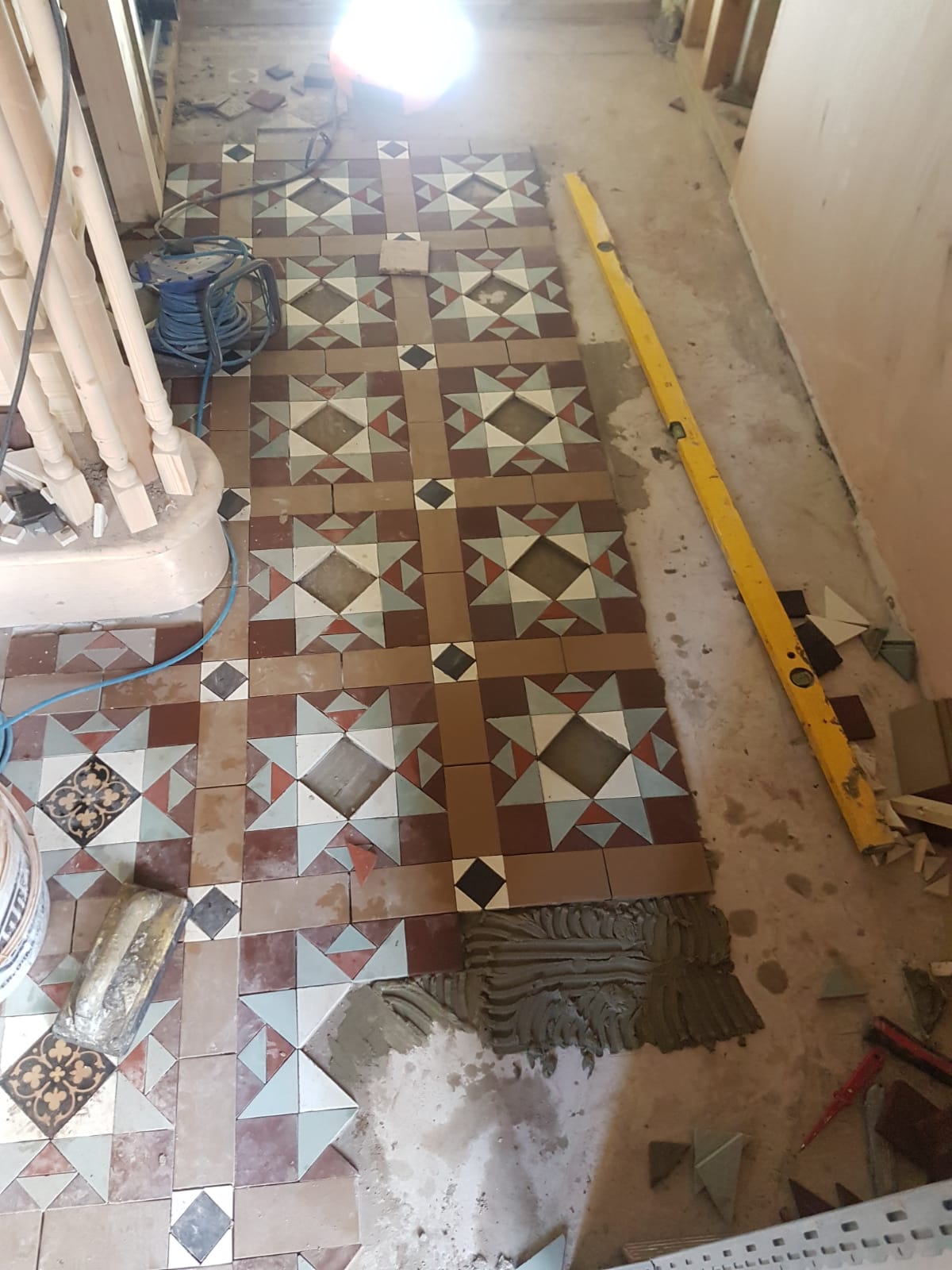Things You Will Need
- Drop cloth (optional)
- Masking tape
- Safety glasses
- Carbide handheld grout saw
- Nail set
- Hammer
- Chisel
- Putty knife
- Cordless drill
- Carbide-tipped masonry drill bit
Damaged Tile Removal
1
Spread a drop cloth below the work area if the damaged tile you plan to remove is a wall tile. Protect the tiles around the damaged tile. Tear off several strips of masking tape and adhere the pieces to the edges of the surrounding tiles. Wear safety glasses to protect your eyes.
2
Remove the old grout in the joints around the tile with a carbide handheld grout saw. Use a back-and-forth sawing motion to cut away the old grout. Be careful not to cut into the drywall or underlayment behind the tile.
3
Position the tip of a nail set against the tile at the cracked or chipped area. Tap the end of the nail set with a hammer to shatter the tile and pry the pieces off with a chisel. Move the nail set to several areas on the surface of the tile and continue to shatter and chisel away the pieces until you remove the majority of the tile.
4
Chip away at the old tile adhesive with a chisel and hammer. Scrape and smooth the area clean with a stiff putty knife. Be careful not to gouge into the drywall or underlayment during this process. The area is now ready for the new soap dish or replacement tile.
Undamaged Tile Removal
1
Follow the instructions as outlined in Step 1 and Step 2 for the removal of a damaged tile.
2
Take your nail set and punch a series of holes in an “X” pattern along the surface of the tile. These holeshelp to keep the drill bit from wandering when drilling through the tile.
3
Drill through the tile at each hole with a drill equipped with a carbide-tipped masonry bit. Be careful not to drill through the drywall or underlayment behind the tile. Use your chisel and hammer and connect the “X” pattern of holes.
4
Shatter the tile and remove the pieces with your chisel and hammer. Follow the instructions in Step 4 for the removal of a damaged tile.
Source: HomeGuides.sfgate.com





